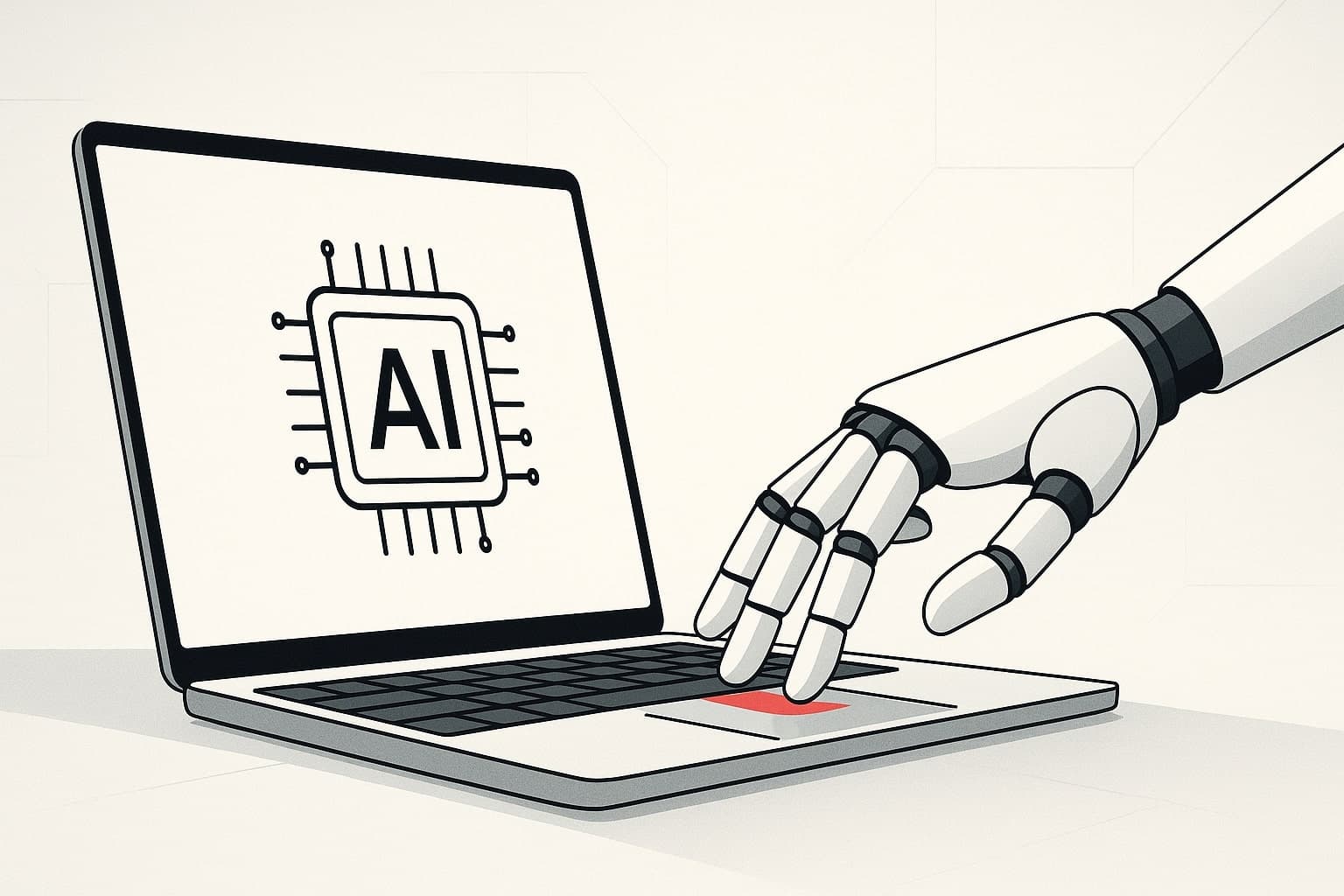October 15, 2025
General

For small businesses, every minute and resource matters. Yet, countless hours are spent on repetitive, low-value tasks — managing emails, tracking expenses, updating spreadsheets, or responding to customer queries.
Artificial Intelligence (AI) is changing that. Once seen as a technology reserved for large enterprises, AI is now affordable, accessible, and scalable — helping small businesses automate manual processes and focus on growth.
Let’s explore how small businesses can leverage AI to save time, cut costs, and unlock new levels of productivity.
AI allows small teams to work smarter, not harder by handling repetitive, data-heavy, or decision-based tasks. It automates workflows, improves accuracy, and enables owners to focus on strategy rather than operations.
Some key benefits include:
Reduced human error through automated data handling.
24/7 efficiency with AI-driven chatbots and systems.
Cost savings from fewer manual hours and optimized workflows.
Better decision-making through AI analytics and insights.
1. Automating Customer Support with AI Chatbots
Customer service can easily consume a small team’s time. AI chatbots and virtual assistants can handle common queries, bookings, or complaints — instantly and accurately.
Example:
A local e-commerce store uses an AI chatbot integrated with WhatsApp and its website to answer FAQs, track orders, and even process returns. This reduced their customer service load by over 60%.
Popular Tools:
ChatGPT for business chatbots
Intercom and Drift for AI-based customer engagement
Twilio and Manychat for messaging automation
2. Streamlining Administrative Workflows
From appointment scheduling to invoice management, AI assistants like Zapier, Notion AI, or Google Duet AI automate routine workflows.
Use cases include:
Automatically sending follow-up emails after meetings
Generating reports from CRM data
Updating financial records or inventory databases
Example:
A fitness studio automated its class scheduling and payment reminders using AI integrations, cutting admin time by 40% and improving client retention.
3. Simplifying Marketing and Content Creation
Small businesses often struggle to keep up with marketing demands — social media posts, blogs, and email campaigns. AI can generate and optimize content quickly while maintaining quality.
AI applications:
AI copywriting tools (e.g., Jasper, Writesonic, ChatGPT) for social posts and blogs
Image generation tools for branded visuals
Predictive analytics to identify high-performing content types
Example:
A small bakery used AI-generated ad copy and visuals for Instagram campaigns, doubling engagement within a month while cutting marketing costs by 50%.
4. Automating Accounting and Expense Tracking
AI-based financial tools can analyze transactions, categorize expenses, and even forecast cash flow — reducing manual bookkeeping time.
Tools to try:
QuickBooks with AI-powered automation
Xero for smart expense categorization
Fyle and Expensify for receipt management
Example:
A freelance consultancy used AI accounting tools to automatically reconcile invoices and payments, saving 8–10 hours per week of manual spreadsheet work.
5. Enhancing Hiring and HR Processes
Recruitment and HR operations involve repetitive administrative work — sorting resumes, scheduling interviews, tracking attendance, etc.
AI tools can:
Automatically filter and rank candidates
Send interview reminders
Analyze employee feedback for sentiment trends
Example:
A tech startup implemented an AI-powered applicant tracking system (ATS) that screened resumes for key skills and cultural fit. This reduced hiring time by 30% and improved quality of hires.
6. Improving Sales and Lead Management
AI tools help small sales teams manage leads, follow-ups, and forecasting more efficiently.
Applications include:
Lead scoring: AI ranks prospects based on engagement and purchase likelihood.
Sales forecasting: Predicts which deals are most likely to close.
CRM automation: Updates records automatically after calls or meetings.
Example:
A small B2B service provider integrated HubSpot’s AI assistant to automate lead scoring and follow-ups — resulting in a 25% boost in conversion rates within two months.
Step 1: Identify Repetitive Tasks
Start by listing processes that are time-consuming or error-prone — such as data entry, email responses, or invoice creation.
Step 2: Choose Scalable AI Tools
Opt for plug-and-play AI tools that integrate with your existing systems. Many offer free tiers or small business plans.
Step 3: Start Small, Then Scale
Automate one process at a time — such as customer support or invoicing — and gradually expand based on results.
Step 4: Monitor and Improve
Regularly evaluate AI performance. Review metrics like time saved, response rates, or customer satisfaction to measure ROI.
Small businesses may hesitate to adopt AI due to misconceptions about cost, complexity, or data privacy. Here’s how to navigate them:
Budget concerns? Start with affordable tools or free AI platforms.
No tech team? Choose no-code automation tools like Zapier or Make.
Data concerns? Work with trusted AI providers that ensure compliance with data protection standards (GDPR, ISO, etc.).
As AI tools become more user-friendly and affordable, small businesses will continue to gain enterprise-level efficiency. From automated workflows to AI decision assistants, these technologies will reshape how teams operate — letting humans focus on creativity and strategy while AI handles the repetitive work.
AI isn’t about replacing people — it’s about freeing teams from repetitive tasks so they can focus on growth. Small businesses that adopt AI early gain a clear competitive edge — in time savings, accuracy, and customer satisfaction.
If you’re ready to reduce manual work and streamline operations using AI, MLab Innovations can help you identify, design, and implement the right AI automation solutions for your business.